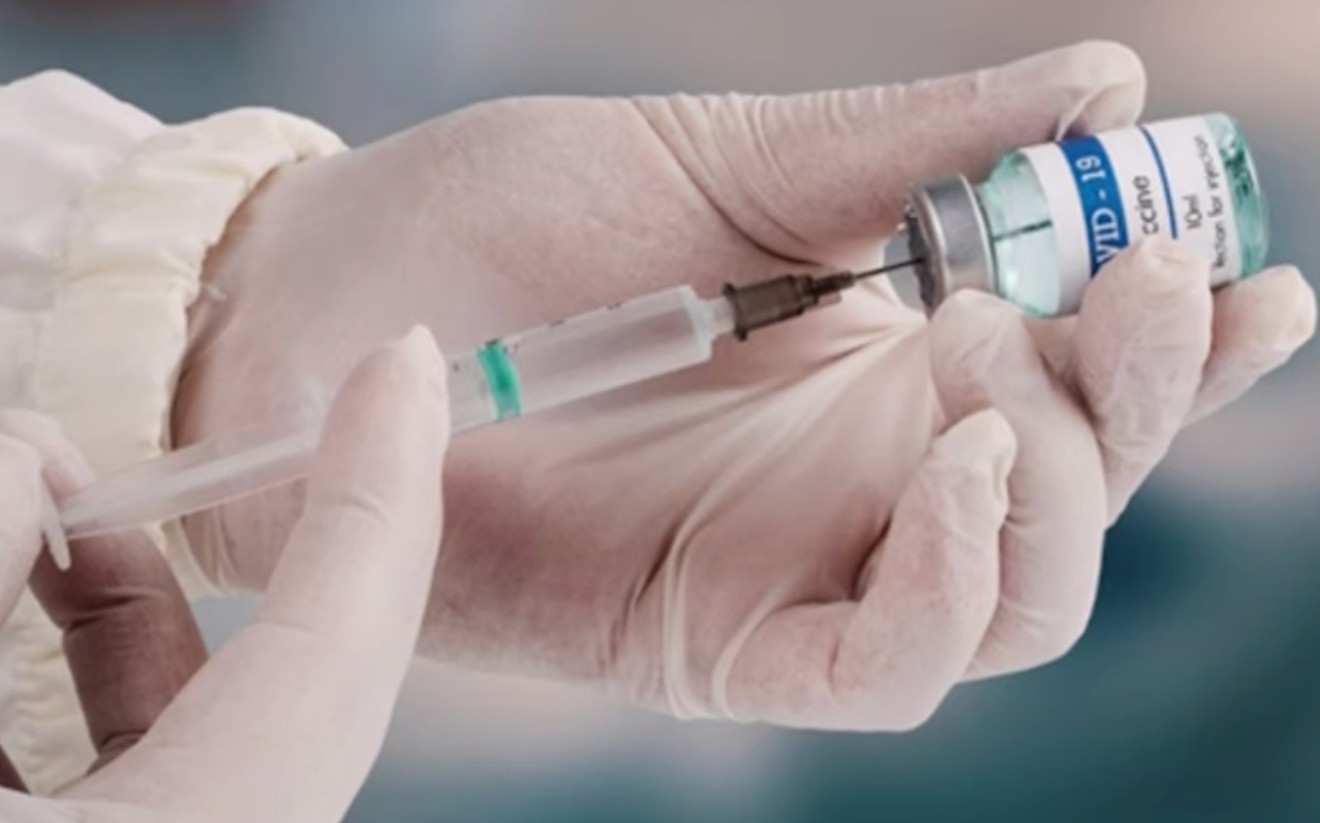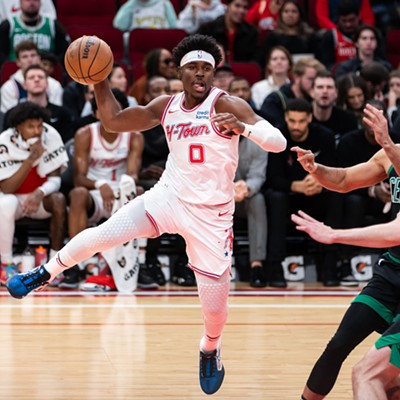Four years ago, Dr. Tedros Adhanom Ghebreyesus, Director-General of the World Health Organization, announced that the organization declared the coronavirus, or COVID-19, outbreak a global pandemic.
“WHO has been assessing this outbreak around the clock, and we are deeply concerned both by the alarming levels of spread and severity and by the alarming levels of inaction,” Ghebreyesus said at a press conference. “We have therefore made the assessment that COVID-19 can be characterized as a pandemic.”
“Pandemic is not a word to use lightly or carelessly. It's a word that, if misused, can cause unreasonable fear or unjustified acceptance that the fight is over, leading to unnecessary suffering and death,” he added.
This week marks the fourth anniversary of this declaration. Since then, at least 1.1 million people in the United States have died, and more than 6.8 million have been hospitalized, according to the Centers for Disease Control and Prevention's COVID-19 Data Tracker.
“I was working so much, it was a blur. It was very scary,” Dr. Catherine Troisi, infectious diseases epidemiologist with UTHealth Houston School of Public Health, said. “Because you know, I knew what could happen, and we were getting such scary reports out of Wuhan [China], then Italy and New York City.”
Troisi said society has moved on and forgotten many things that happened — healthcare professionals have not. They are still seeing hospitalized patients, intensive care unit beds occupied with COVID-19 cases and deaths.
She added that people might have decided it ended, but this is not the reality. As of two weeks ago, there were almost 600 deaths across the country during the week of March 2 as a result of the virus.
“Now, that’s not near what we were seeing at the height of the pandemic, but it’s still more than we see from flu and other respiratory illnesses,” Troisi said. “We’re in a much better place than four years ago.”
Dr. Peter Hotez, co-director of the Texas Children’s Hospital Center for Vaccine Development and dean of the National School of Tropical Medicine at Baylor College of Medicine, said this is largely due to the ability to accelerate safe and effective COVID-19 vaccines rapidly.
According to Hotez, the distribution of vaccines targeting the virus saved 3 million American lives. Internationally, he and his colleagues provided a low-cost COVID-19 vaccine that reached 100 million people in India and Indonesia.
Hotez said making these vaccines available to the public in real-time as the COVID-19 pandemic unfolded was a huge lesson that helped medical professionals understand how to combat future pandemics.
However, he noted an obstacle that impeded these efforts, which those in the healthcare sector will need to address head-on before the next: the adverse power of the anti-vaccine movement.
Hotez said rhetoric from anti-vaccine activists persuaded 200,000 Americans, including 40,000 Texans, to “needlessly die” as a direct result of being convinced not to take a COVID-19 vaccine.
“That’s a legacy that we’re going to try to fix before the next pandemic,” Hotez said. “I think we need to look at anti-vaccine and anti-science sentiment or the movement and think about how we can work with other branches of the U.S. government and other international U.N. agencies to begin counteracting it because it now has revealed itself as a deadly force.”
“At the end of 2020, a significant segment of the population was clamoring to get vaccinated. With the new annual immunization or booster, fewer than 20 percent of Americans have expressed any interest in getting that vaccine,” he added. “I think that represents a spillover from the anti-vaccine movement.”
If the anti vaccine sentiment is not addressed, Hotez said there is a real risk that medical professionals will be handcuffed in their ability to fight the next pandemic.
Troisi echoed Hotez’s sentiments, saying that one of the unfortunate consequences of the COVID-19 pandemic was the effect of the partisan divide. She said public health’s hands are being tied in ways that haven’t occurred before through bans on masks and vaccine mandates.
“My worry is that when the next pandemic occurs because it will happen —and we can hope it won’t be for another 100 years—the response that we are able to have to control it will be hampered by the partisanship and by the legal restrictions that are going on,” Troisi said.
Troisi added that the effectiveness of these vaccines and antivirals, such as Paxlovid, a medication used to treat the virus in adults who are at a higher risk of developing severe symptoms, not only mitigates the spread of the virus but also decreases the chances of developing Long COVID-19. People with this experience a wide range of long-term effects or symptoms from the virus for weeks, months, or years after initial infection.
She said these patients and those who are immunocompromised could feel as if they’ve been forgotten as nonpharmaceutical interventions such as quarantining, masking and social distancing have essentially disappeared.
The CDC changed its guidelines on March 1, reversing its recommendation to quarantine for five days and instead recommending that those with respiratory illnesses, including COVID-19, ensure their symptoms are improving and that they are fever-free for 24 hours without using fever-reducing medication before returning to in-person activities.
“The problem is that there are still people at high risk if they get infected,” Troisi said. "When you practice those interventions, you aren’t just protecting yourself. You’re protecting people you come in contact with.”
“They [CDC] want to be able to lump together recommendations for COVID-19, RSV and influenza,” Hotez added. “While that may be desirable, I think we have to keep in mind that COVID-19 does some things that the other respiratory viruses don’t, including Long COVID, higher death rates, and the thromboembolic events leading to heart attacks and strokes. So, I don’t think the analogy applies perfectly well.”
According to Hotez, COVID-19 levels are decreasing aggressively, but the CDC’s call to not enforce quarantining may challenge those trends. New hospitalization numbers and wastewater viral load metrics are declining. If this continues, he hopes they could be at one of the lowest points within the next couple of weeks.
Hotez said that currently, no new variants are on the horizon that could cause cases to accelerate. Still, a possible increase in the coming months must be considered, as this has occurred in previous years during the summer.
“Even if it doesn’t spike back up again in the summer months and even if this is the last gasp of COVID-19 [which Hotez doesn't think it is], remember we’ve already had three major coronavirus pandemics,” he said. "We had SARS in 2002, MERs in 2012 and now COVID-19, and I predict we will have another major coronavirus before the end of this decade.”
Hotez said that although the virus may technically be considered endemic—or an infection constantly present—practically speaking, it still behaves like a pandemic virus, and he would continue to treat it as such.
Troisi said that at the beginning of the COVID-19 pandemic, she and other medical professionals said there were two ways a pandemic could end: the virus would go away, or people would decide it's ended.
Despite the U.S. Department of Health and Human Services ending its previously issued COVID-19 Public Health emergency last year and the WHO ending its declaration of a public health emergency of international concern, the organization continues to refer to the virus as a pandemic.
“Whether to call it (COVID-19) a pandemic or not, I don’t know because it’s not going away,” she said. “I don’t think you can call it a pandemic forever. We just don't know yet."
Support Us
Houston's independent source of
local news and culture
account
- Welcome,
Insider - Login
- My Account
- My Newsletters
- Contribute
- Contact Us
- Sign out

Two Houston-area medical professionals say one of the main reasons why COVID-19 has not spread at the same rate it did in 2020 is due to vaccinations and antivirals made available through the pandemic.
Screenshot
[
{
"name": "Related Stories / Support Us Combo",
"component": "11591218",
"insertPoint": "4",
"requiredCountToDisplay": "4"
},{
"name": "Air - Billboard - Inline Content",
"component": "11591214",
"insertPoint": "2/3",
"requiredCountToDisplay": "7"
},{
"name": "R1 - Beta - Mobile Only",
"component": "12287027",
"insertPoint": "8",
"requiredCountToDisplay": "8"
},{
"name": "Air - MediumRectangle - Inline Content - Mobile Display Size 2",
"component": "11591215",
"insertPoint": "12",
"requiredCountToDisplay": "12"
},{
"name": "Air - MediumRectangle - Inline Content - Mobile Display Size 2",
"component": "11591215",
"insertPoint": "4th",
"startingPoint": "16",
"requiredCountToDisplay": "12"
}
]
KEEP THE HOUSTON PRESS FREE...
Since we started the Houston Press, it has been defined as the free, independent voice of Houston, and we'd like to keep it that way. With local media under siege, it's more important than ever for us to rally support behind funding our local journalism. You can help by participating in our "I Support" program, allowing us to keep offering readers access to our incisive coverage of local news, food and culture with no paywalls.
Trending News
- Column: Opting Out of the STAAR Test Requires a Law Degree Or Iron Will
- Former Katy ISD Trustees Band Together To Support Two Trustees Running For Re-Election
- HISD Scrambles As it Admits Its EOY Assessment Data is Wrong [UPDATED]
-
Sponsored Content From: [%sponsoredBy%]
[%title%]

Don't Miss Out
SIGN UP for the latest
news, free stuff and more!
Become a member to support the independent voice of Houston
and help keep the future of the Houston Press FREE
Use of this website constitutes acceptance of our
terms of use,
our cookies policy, and our
privacy policy
The Houston Press may earn a portion of sales from products & services purchased through links on our site from our
affiliate partners.
©2024
Houston Press, LP. All rights reserved.





